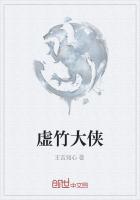It remains an open question when Islam was first introduced into China. For a long period of time, many scholars have been working on this matter, and reached different conclusions. A popular theory advanced by well-known contemporary historian Chen Yuan indicates that it was in the second year of Yonghui of the Tang Dynasty (651 A.D.)? He found out actual records in “History of Tang” and “Cefu Yuangui (Guide to Books)”: In the second year of Yonghui of Emperor Gaozong of Tang, the third Caliph of Arabia Othman (on the throne in 644-656 A.D.)
dispatched diplomatic envoys to Chang"an, capital city of Tang, to pay an official call to Emperor Gaozong, introducing to him the caliphate, their customs and Islam. For historic purposes most of scholars have acknowledged this year as the symbol of Islam"s advent into China.
It is through two routes that Islam was introduced into China: the Sea Route and the Land Route. Since Zhangqian (?-114 A.D.) was sent as an envoy to the Western Region (A Han Dynasty term for the area including now Xinjiang and Central Asia) in the Han Dynasty, the transportation and communication between China and the countries to the west had started. In the 9th year of Yongyuan of Emperor Hanhe of the Han Dynasty, Ganying reached the Arabian Peninsula in person when he was sent on a diplomatic mission to the Western Region. In the Tang Dynasty, the transportation and communication between China and the west was further developed. The Land Road starting from Southwest Asia, via Persia, Afghanistan, Central Asia, the Tianshan Mountains and Hexi Corridor, to Chang"an, capital of Tang, was an important passage linking China and the west. A great number of Muslim traders made long and arduous journeys into China to do business. In accordance with “Zi Zhi Tong Jian” (History as a Mirror), there were over 4000 foreign business inChang"an in the Tang Dynasty, among which the majority were Arabs and Persians, and the Tang government had to set up a “Trading Department” to be in charge of administration. The Tang Dynasty also had frequent military contacts with the Arab Islamic Empire. In 148 years‘ period of time from the second year of Yonghui of Emperor Gaozong (651 A.D.) to the 14th year of Zhenyuan of Emperor Dezong (798 A.D.), the recorded Arab envoys’ visits to China reached 37. In the middle of the Tang Dynasty, the central authority was weakened by political corruption and social problems and the governors in control of outlying prefectures grew stronger. In the winter of 755 A.D., governor An Lushan, who was in control of Pingzhan, Fanyang and Hedong, rebelled in Fanyang (now Beijing), and Shi Shiming, a general under his control, captured a great part of Hebei in the mean time. This is an event historically called “Rebellion of An and Shi”, which lasted 7 years and was eventually put down by the Tang government. From then on, the Tang regime became weaker and weaker. To put down “Rebellion of An and Shi”, the Tang government asked for military help from the Arab Empire. Emperor Zongyun allowed the Arab soldiers to live in China permanently when the rebellion was over. As a result, Islam was introduced into the Northwest of China by Arab and Persiantraders, diplomatic envoys and soldiers.
In the Tang Dynasty, Chinese and Arab traders dominated the sea business passage starting from Persian Gulf and Arab Sea, via the Gulf of Bangladesh, the Straits of Malacca and the South China Sea, to Chinese ports like Guangzhou, Quanzhou and Yangzhou. A great number of Arab and Persian traders come to these places to do business, and some of them settled down there. Thus, Islam was introduced into China by sea business.
The Tang and Song dynasties (618-1279 A.D.) were the first periods of Islam in China. Muslims in China at that time were basically composed of traders, soldiers and diplomatic envoys from Arabia, Persia and other countries. They settled down and lived in compact communities when they came to China, keeping their religion and unique way of life. The purpose they came to China was to do business rather than missionary work, therefore, they were not opposed by the Chinese ruling class, and were allowed to settle down and intermarry with local Chinese people. The Muslims who had taken up permanent residence in China were called Zhu Tang (literally means foreigners living China)? These Zhu Tangs married local Chinese women and multiplied, and their descendants became native- born Fan Ke (meaning foreigner, actually referring to foreignMuslims)? However, Muslims at that time were of small number, concentrating in big cities and ports located along vital communication lines. Due to religious needs and national customs, they built mosques and lived in compact communities with the mosques as center. Today"s mosques like the Huaisheng Mosque in Guangzhou (constructed in the Tang Dynasty), the Qingjing Mosque in Quanzhou (Masjid al-Ashab, translated as Shengyou Mosque, constructed in the Northern Song Dynasty), the Xianhe Mosque in Yangzhou (constructed in the SouthernSong Dynasty) and the Fenghuang Mosque in Hangzhou(constructed in the Yuan Dynasty) are called The Four Ancient Mosques in China.















